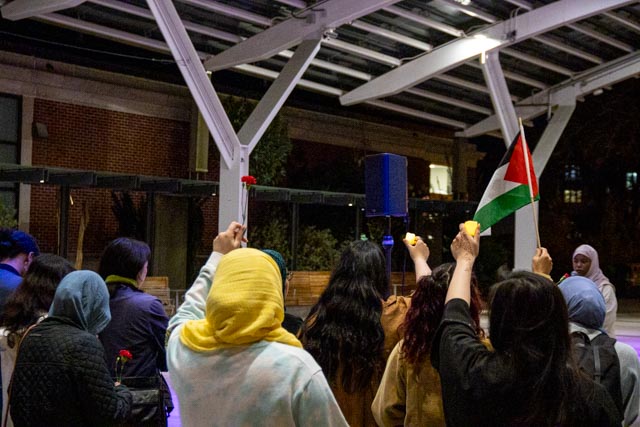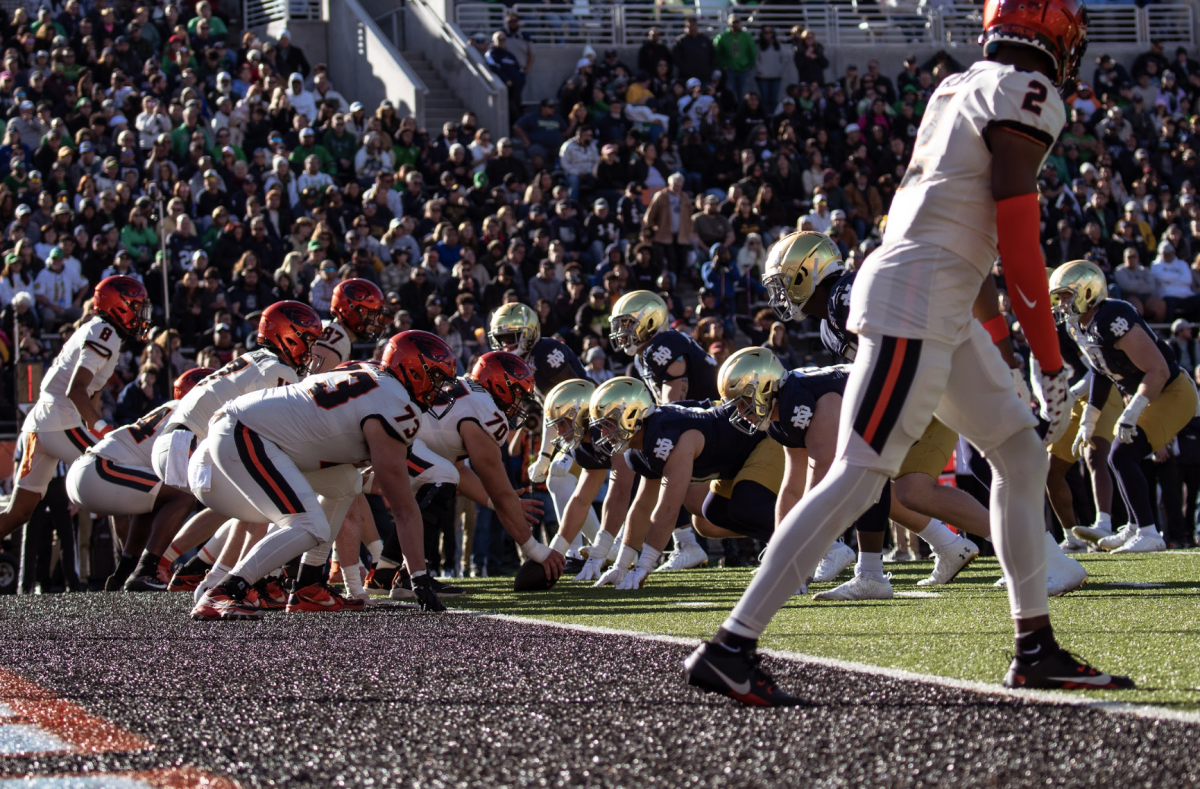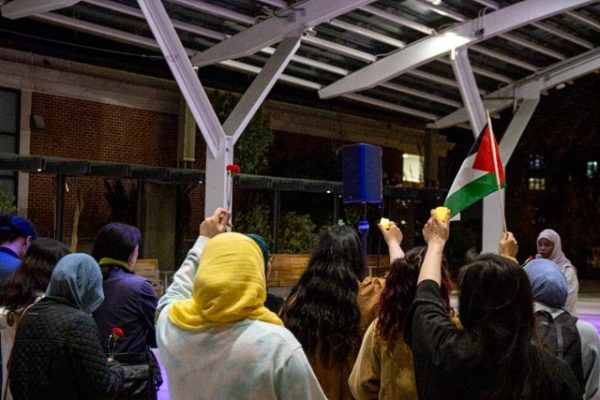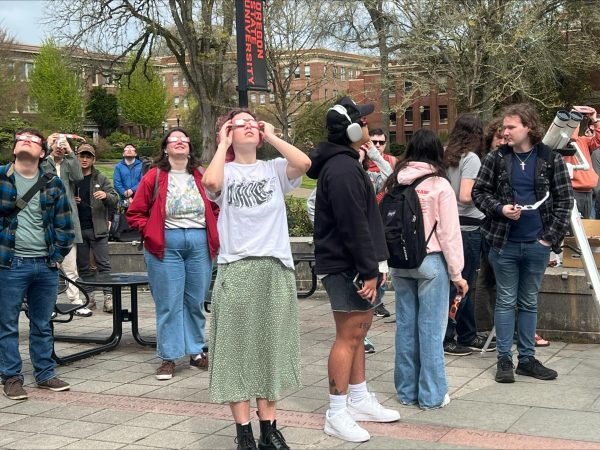Commencement traditions connect to past
June 11, 2018
Receiving diplomas at graduation, march from quad unique to Oregon State University
The commencement ceremony is a long-standing tradition tied to graduation every spring, where graduates dress in a gown and cap, among other regalia, and receive their diploma.
With over 4,200 graduates expected to participate in this year’s commencement ceremony, the tradition and history of this annual ceremony has grown substantially according to the 2018 Graduating Class registrar annual report by OSU’s
Registrar Rebecca Mathern.
According to Larry Landis, the director of Special Collections and Archives Research Center within the OSU Library, the first commencement ceremony was held in 1870 with two males and one female.
“The academic dress that would have been worn in 1870 is not like what we see
today,” said Landis.
According to the American Council on Education website, an Intercollegiate Commission made up of representatives from leading institutions met at Columbia University in 1895. There they adopted a code of academic dress, which regulated the cut, style and materials of gowns and prescribed which colors were to represent the different fields of learning.
In 1932, the ACE authorized a committee to draft a revised code for the consideration of institutional members of the ACE, which was then approved and has been in effect
since that year.
The ACE commissioned a Committee on Academic Costumes and Ceremonies in 1959, which reviewed and updated the code that year and in 1986, which was the last time the code has been updated.
Within the code, which can be found on the ACE’s website, are the specifications regarding the proper Academic Regalia. Also in the code lies the specifics such as the type and manner of gown, the colors designating different academic disciplines like orange for engineering and crab for business, as well as additional guidance on costumes for colleges and universities.
Additionally outlined on the ACE’s website is the historical overview of the Academic Costume Code. Here the ACE states that the origins of academic dress date back to the 12th and 13th centuries when universities were beginning to take form. The ordinary dress of a scholar, both student and teacher, was similar to that of a cleric.
The ACE cites a statute of the University of Coimbra in 1321 which required that all “Doctors, Licentiates, and Bachelors” wear gowns. The ACE also states that in England during the second half of the 14th century, the statutes of certain colleges forbade “excess in apparel” and prescribed the wearing of
a long gown.
The assignment of colors to signify certain subjects was a later development that was only standardized in the United States in the 19th century, according to the ACE website. The ACE’s website goes on to state that European institutions have always had great diversity in their specifications of academic dress, whereas American colleges and universities have opted for a definite system that all might follow.
Even though the United States institutions are more standardized than European institutions, the Academic Ceremony Guide developed by the ACE states that, because of the many factors differentiating and affecting the academic ceremonies of institutions, institutions have a wide latitude in meeting the conditions of the guide.
For example, according to the ACE Academic Ceremony Guide, “there is no general rule for the position of the tassel on the mortarboard. However, numerous institutions have adopted the practice, during commencement exercises, of requiring candidates for degrees to wear tassels on the right front side before degrees are conferred and to shift them to the left at the moment when degrees are awarded to them.”
According to Landis, there are even a couple of traditions at OSU’s commencement ceremony that are not seen very often
at other universities.
“Something OSU does that is fairly unique is making sure that each grad gets their diploma at the ceremony,” Landis said. “That’s not the case at other universities.”
Even at OSU there are some traditions that have changed over the years,
according to Landis.
“There wasn’t a guest speaker from at least the late 1980s to 2004,” Landis said. “That tradition was resumed just 14 years ago.”
Commencement used to be held on Wednesdays into the 1920s and on Monday until 1961. Starting in 1962, it was held on Sunday, until 2009 when it began taking place on Saturday. It has taken place in many different areas around campus, most recently moving from Gill Coliseum to Reser Stadium in
2001, Landis said.
“One tradition that has been in place for a long time is the march from the MU quad,” Landis said. “While the ceremony location has changed, the march is a
long-standing tradition.”

























































































































